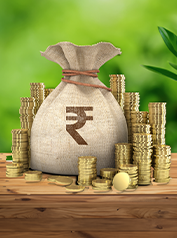
Previously, a multitude of indirect taxes, like value-added tax (VAT), central excise duty, and service tax, were levied. These were later replaced by three forms of GST, namely CGST, SGST, and IGST.
However, the introduction of GST does not mean that all sectors that indulge in the trade of goods and services in India are charged a single GST rate. One such example is that of the Restaurant or the Hospitality sector.
The individuals associated with the industry in question are subjected to varying GST rates. The GST on restaurant services depends on their location, stakeholders, and the price range under which their respective accommodation fares fall.
The applicable GST rate on food services falls under three GST brackets: 5%, 12%, and 18%. Read further to know more about the applicable GST rate on restaurant services and how it affects the prices of food services.
The following table presents applicable GST rates on restaurants:
Type of Restaurant |
GST Rate on Restaurants in India |
|---|---|
Restaurants found in and around Railways/IRCTC |
5% (excl. ITC) |
Independent generic restaurants |
5% (excl. ITC) |
Independent outdoor catering/food delivery services |
5% (excl. ITC) |
Restaurants in hotels where room tariff is ₹7,500 at the most |
5% (excl. ITC) |
Generic outdoor catering services within the premises of a hotel where the room tariff is ₹7,500 at the most |
5% (excl. ITC) |
Restaurants within hotels where the room tariff is more than/equal to ₹7,500 |
18% (incl. ITC) |
Outdoor catering within the confines of hotels where room tariff is more than/equal to ₹7,500 |
18% (incl. ITC) |
Input Tax Credit (ITC) refers to the credit claimed on GST paid on the purchase of a commodity or service. Restaurants can claim ITC, which can help them flourish their business.
Prior to the introduction of the GST regime, restaurants used to charge four to six forms of indirect taxation. The total taxation under the pre-GST regime often crossed the threshold of 18% as applicable under the GST.
Under the old indirect taxation regime, a diner or a patron had to pay the following taxes:
Service charge
Service tax
Krishi Kalyan Cess (KKC)
Swachh Bharat Cess (SBC)
Value-added tax (or VAT)
Since the implementation of GST on restaurants, a diner will only get to see two or three forms of taxes being charged.
Typically, in the post-GST era, you will only have to pay the summation of state and central Goods and Services Tax on your food bill. The summation of SGST and CGST usually amounts to 18%.
However, certain establishments still tend to charge service tax alongside the applicable amount charged as GST on restaurant bills.
Additionally, it must be noted that individual grocery items also attract GST. However, the food GST rate is later adjusted in the overall cost of the finished product.
Below is a list of the food products that have been assigned categories by the GST Council, along with their applicable GST rates.
Description |
Applicable GST Rate |
|---|---|
GST on fresh and/or chilled vegetables (For example, Garlic, Potatoes, Onions, and Brinjal) |
Nil |
GST on non-container leguminous vegetables which are dried and packed |
Nil |
GST on fresh/dried coconuts, grapes, bananas, apples, and pears, among others. |
Nil |
GST on uncontained fresh meat, fish |
Nil |
GST on birds’ eggs in a shell |
Nil |
GST on milk and similar dairy products |
Nil |
GST on container-packed vegetables |
Nil |
GST on vegetables that have been preserved using brine or other means which are considered to be unsuitable for immediate human consumption |
Nil |
GST on meat that is packed in a container bearing a registered trademark and a brand name |
5% |
GST on birds’ eggs which are not in a shell |
5% |
GST on dried vegetables which are packed in a container bearing a registered brand name |
5% |
GST on processed ginger, turmeric, thyme, curry leaves, and bay leaves, among others. |
5% |
GST on food items such as meal/powder of dried leguminous vegetables |
5% |
GST on vegetables, fruits, nuts, and edible plant parts which are preserved using sugar |
5% |
GST on food items such as fruits, nuts, and edible plant parts preserved and/or prepared using vinegar and/or acetic acid. |
12% |
GST on food prepared with flour, malt extract, etc., containing cocoa less than 40% of total weight. |
18% |
GST on chocolate and other cocoa-based edibles |
18% |
With the introduction of the GST regime, Service Tax and VAT has been excluded. However, apart from the GST rate on restaurant services, certain establishments also charge a service charge.
The following table provides a comparison between restaurant bill prices in the pre-GST and post-GST eras.
Particulars |
Pre-GST regime |
Post-GST regime |
|---|---|---|
Total Bill |
₹5,000 |
₹5,000 |
Output Tax |
- |
- |
–VAT @14.5% |
₹725 |
- |
–Service tax@6% |
₹300 |
- |
GST @5% |
- |
₹250 |
Total output tax liability |
₹1025 |
₹250 |
Input credit |
- |
- |
—VAT ITC (no ITC on ST) |
₹75 |
- |
—GST ITC |
- |
- |
Final Output tax liability |
- |
- |
–VAT |
₹600 |
- |
–Service Tax |
₹250 |
- |
–GST |
- |
₹300 |
Under the previous indirect taxation regime, the total amount payable as taxes amounted to ₹950.
This amount is considerably higher than the current amount payable, which will be as low as ₹250 as per the current hotel food GST rate This reduces the total bill and hence, enhances the working capital of business owners.
Restaurants cannot claim Input Tax Credit (ITC) if the applicable GST rate of the restaurant bill is 5%. Restaurants can claim ITC if the GST rate on food is 18% . As such, the net outflow is lesser, and the working capital available is higher.
Keep in mind that food groups have varied GST rates, and this shift promotes more diversity in menus. Restaurants can now widen their offerings, without worrying about expensive tax implications.
As per the new GST rules, food delivery platforms are required to pay 5% of the GST rate on food you order. Earlier, restaurants were required to collect and deposit taxes. The new rules have made delivery platforms responsible for this purpose.
The Goods and Services Tax (GST) was introduced to streamline the taxation process by making one single form of indirect tax that would apply to all goods and services produced and consumed in India.
The above rates can always be revised or omitted by the GST Council. You can learn more about the applicable GST percentages on Bajaj Markets.
The highest applicable GST rate on the food segment is 18%.
Many food items like fresh/chilled vegetables, uncontained meat, etc., have NIL GST rates.
The GST on takeaway food is 18%.
Yes, GST rules are applicable for restaurants. If restaurants fall under the 5% rate bracket, they cannot claim the Input Tax Credit (ITC). In case they come under the 18% bracket, restaurants can claim ITC. These rates are dependent on the location of the restaurant.
The turnover limit for the GST registration is ₹1.5 Crores.
No, the service charge is a separate taxation applicable to the total restaurant bill.
Academy by Bajaj Markets












